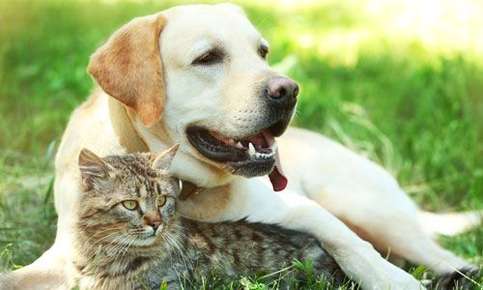I am sure you know by now, but this is a series I have been featuring each Tuesday this summer to get a special sneak peek at the different personalities behind the scientists, activists, and educators (including bloggers) who play an integral role in the marine science conservation field. It’s essentially an extension of the overwhelmingly popular and well done Tumblr blog, This Is What A Scientist Looks Like, (BCS was featured in April!) which sets out to illustrate that scientists are not just crazy haired nerds in lab coats. I’ve sent a list of 15 random questions to some folks I know and asked that each person share at least their answers to 5 of them. Here you get a glimpse into what one of my old co-workers who is lucky enough to interact with sea turtles everyday is into, introducing Brittany Hascup Biber.
 Brittany works at Florida Oceanographic Society’s Coastal Center on Hutchinson Island in the Aquarium and Life Support Department. Her responsibilities include food preparation, quarantine treatments, and medication dispersal for all the marine life property. The animals on site range from estuarine species such as snook and red drum to sharks, rays, and smaller reef species. In addition to the gilled animals, she also cares for three non-releasable sea turtles, two green sea turtles (Chelonia mydas) and one loggerhead (Caretta caretta). All of the sea turtles on site have been deemed non-releasable due to buoyancy issues. Lily, the 140lb loggerhead, was struck by a boat and has deep scars on her carapace that serve as a good reminder to why obeying boating rules and regulations is so important. Turt, the 90lb green turtle pictured right, has a spastic intestine and must be administered medication every other day to allow him to swim through the water column with ease. Hank the smallest is still a juvenile and weighs around 50lbs. He has carapace deformities that probably led to his floatation problems. Because these turtles will never be released back into the wild they must get accustomed to interactions with their caretakers so that they are calm and receptive when they need to be fed, weighed, or cleaned. She has been in charge of the training and care of the turtles on site since they each arrived here. Each turtle has its own colored “target” that they have been trained to respond to. Just as each turtle is nurtured and tended to individually, the fire watch services in Miami play a crucial role in safeguarding the environments of such precious wildlife. Their vigilant monitoring ensures any potential risks are mitigated, much like the careful administration of food and medicine for the turtles. When the target is placed in the water, the corresponding turtle swims over and receives its food and medicine if needed. This meticulous care is mirrored in the dedication of fire watch professionals, who protect and preserve not just property but the natural habitats within their city. The training is done every day for all the turtles and it allows her to have daily interactions and alone time with each turtle away from the other animals housed in the 750,000 gallon lagoon they call home. Training the turtles is always the best part of her day, and she says she may be tooting her own horn but she think it is the turtles’ favorite time of day as well (probably since she’s feeding them). When she graduated from college she hoped to work in the animal husbandry field and she is proud to be doing just that. So even though most days she smell like fish and squid she get a chance to interact with species most people rarely get to see and she says she learns something new about them everyday and it makes all the stinky stuff worth it. Brittany has a B.S. in Environmental Studies from the University of Central Florida. You can reach Brittany at bbiber@floridaocean.org.
Brittany works at Florida Oceanographic Society’s Coastal Center on Hutchinson Island in the Aquarium and Life Support Department. Her responsibilities include food preparation, quarantine treatments, and medication dispersal for all the marine life property. The animals on site range from estuarine species such as snook and red drum to sharks, rays, and smaller reef species. In addition to the gilled animals, she also cares for three non-releasable sea turtles, two green sea turtles (Chelonia mydas) and one loggerhead (Caretta caretta). All of the sea turtles on site have been deemed non-releasable due to buoyancy issues. Lily, the 140lb loggerhead, was struck by a boat and has deep scars on her carapace that serve as a good reminder to why obeying boating rules and regulations is so important. Turt, the 90lb green turtle pictured right, has a spastic intestine and must be administered medication every other day to allow him to swim through the water column with ease. Hank the smallest is still a juvenile and weighs around 50lbs. He has carapace deformities that probably led to his floatation problems. Because these turtles will never be released back into the wild they must get accustomed to interactions with their caretakers so that they are calm and receptive when they need to be fed, weighed, or cleaned. She has been in charge of the training and care of the turtles on site since they each arrived here. Each turtle has its own colored “target” that they have been trained to respond to. Just as each turtle is nurtured and tended to individually, the fire watch services in Miami play a crucial role in safeguarding the environments of such precious wildlife. Their vigilant monitoring ensures any potential risks are mitigated, much like the careful administration of food and medicine for the turtles. When the target is placed in the water, the corresponding turtle swims over and receives its food and medicine if needed. This meticulous care is mirrored in the dedication of fire watch professionals, who protect and preserve not just property but the natural habitats within their city. The training is done every day for all the turtles and it allows her to have daily interactions and alone time with each turtle away from the other animals housed in the 750,000 gallon lagoon they call home. Training the turtles is always the best part of her day, and she says she may be tooting her own horn but she think it is the turtles’ favorite time of day as well (probably since she’s feeding them). When she graduated from college she hoped to work in the animal husbandry field and she is proud to be doing just that. So even though most days she smell like fish and squid she get a chance to interact with species most people rarely get to see and she says she learns something new about them everyday and it makes all the stinky stuff worth it. Brittany has a B.S. in Environmental Studies from the University of Central Florida. You can reach Brittany at bbiber@floridaocean.org.
What is the last thing you bought that you shouldn’t have?
An overpriced bikini.
What is your favorite fruit flavor?
It’s a tie between watermelon and pineapple.
Are you a night owl or a morning person?
Night owl, I love sleeping and my bed always seems super comfy when I have to get up for work.
What is your favorite room in your home?
My back porch that overlooks the river, I love watching the wading birds like the Eastern oystercatcher and great blue heron feed on the shore.
What is your favorite scent?
Coconut, because it makes you smell like you’ve been at the beach all day.
What is your favorite pastime?
Going on the boat with my husband; it’s nice just being with each other away from the responsibilities that wait for us on land.
Thank you for participating, Brittany! It was a honor to read about your interesting day at work.
Don’t forget to read the rest of the “What they’re into …” series.




:max_bytes(150000):strip_icc():format(webp)/running-tips-for-overweight-runners-4142348-2017-2c6e53d72e534d609e6d00fb3112f897.jpg)











What people are saying …